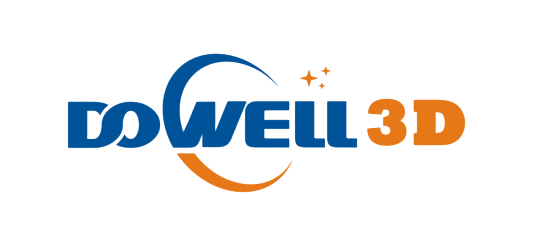When the precision of manufacturing to the micron level converges with the heavy workload needs of manufacturing itself, there is one hands-in-the-air team member directing the flow of work: the integrated motion control platform. More than merely motion, with each being fundamental to performance, reliability, and eventual viability of industrial 3D printing platforms is their seamless orchestration of motors, drives, controllers and feedback systems.
Why Motion Control Matters at the Industrial Scale
Industrial applications need more than hobby grade movement. They require:
Uncompromising Precision & Repeatability: The ability to repeatedly place material or melt powder within tolerances which are frequently quoted in microns, layer upon layer, build upon build.
High Dynamic Response & Speed: Jumping into high speed rapidly accelerating, rapidly decelerating and moving along a complex toolpath to maximize production and quality.
Robustness & Reliability: Running 24-hours a day in high-duty factory workplaces with limited slowdown or repairs.
Synchronization: The ability to move two or more axes (X, Y, Z which are usually rotary and sometimes tool change) at the same time and in perfect unison to achieve complex geometric requirements and operations.
Vibration Mitigation: Reducing mechanical vibrations that distort detail, affect surface finish or even lead to print failures.
The Core Components of Integration
The key to realizing these aims depends on total absorption:
1.High-Performance Motors & Drives: The muscle consists of precision stepper or servo motors, and intelligent drives with high torque and smooth motion profiles and a fast response to control signals.
2.Advanced Motion Controller: The central nervous system. Industrial-grade controllers execute complex kinematic calculations (coordinating multiple axes along 3D paths) in real-time. They handle trajectory planning, interpolation, and closed-loop control algorithms.
3.Precision Feedback Systems: Linear and rotary high-resolution encoders as well as occasional laser interferometers continuously deliver high accuracy and precise information regarding position and velocity data back to the controller allowing true closed-loop control, to correct any error.
4.Real-Time Communication Network: A high-speed component (such as EtherCAT or a proprietary implementation) is required of computing. It guarantees ultra-low latency and jitter-free communication functions between the controller, drives and feedback devices necessary to achieve tight synchronization.
5.Sophisticated Control Algorithms: More complex tasks may be efficiently handled by more advanced algorithms, such as jerk control (aligned change in acceleration to smooth motion), vibration damping (active counter to mechanical resonances), and complex error compensation (such as backlash, thermal drift to name a few).
The Impact of Sophisticated Motion Control
This deep integration comes in a direct form of tangible advantages:
Superior Print Quality: Better detail with sharper details and smoother facial surfaces, as well as uniform dimensional precision throughout the whole build volume.
Increased Production Speed: Optimized acceleration profiles and shortened settling times results in faster traversals without quality degradation, and increases throughput.
Enhanced Process Capability: Enables printing of highly complex, delicate, or large-scale geometries that demand exceptional motion stability and precision.
Improved Reliability & Uptime: Based on hard parts and advanced diagnostics, unexpected failures and maintenance reoccurrence are reduced.
Material & Process Flexibility: Ensures the robust and accurate platform required by advanced materials (polymers, metals, ceramics) and process (FDM, SLS, SLA, DED, Binder Jetting).
The Future: Smarter, Tighter, More Adaptive
Integration of motion control keeps on developing:
AI/ML-Driven Optimization: Machine learning could help develop a dynamic optimization of systems to adjust real-time dynamic behavior, such as vibration or heat affects, which would improve speed and accuracy furthermore.
Digital Twins for Motion: Through virtual simulation and optimization of motion paths and motion control parameters prior to their actual implantation.
Tighter Mechatronic Integration: Motion control systems and the mechanical structure are co-designing each other to attain the finest performance on the beginning of a dynamic level.
Enhanced Condition Monitoring: Predictive maintenance possible using motion control data it indicates when a machine or part is starting to wear or be misaligned.
Conclusion
As opposed to being an addition to an industrial 3D printing platform, motion control integration represents the very kinetics of such a platform. The constant strives to more tightly integrate, smarter algorithm control, and more-performance components is what strives the limits of possibility of industrial type additive manufacturing. With demand already high on speed, precision and dependability, sophistication of the motion control system will continue to be the silent, but decisive factor which will distinguish, and distinguish easily, those prototyping machines which are capable of effective operation and those manufacturing giants who must deliver. Putting money into leading-edge, highly integrated motion control is an investment in the fundamental ability of the platform itself and future competitiveness

 EN
EN
 AR
AR
 BG
BG
 HR
HR
 DA
DA
 NL
NL
 FR
FR
 DE
DE
 EL
EL
 HI
HI
 IT
IT
 JA
JA
 KO
KO
 PT
PT
 RU
RU
 ES
ES
 SV
SV
 TL
TL
 ID
ID
 SR
SR
 SK
SK
 UK
UK
 VI
VI
 ET
ET
 HU
HU
 TH
TH
 TR
TR
 MS
MS
 GA
GA
 BE
BE
 HY
HY
 KA
KA
 LO
LO
 LA
LA
 MN
MN
 NE
NE
 SO
SO
 MY
MY
 KK
KK
 UZ
UZ
